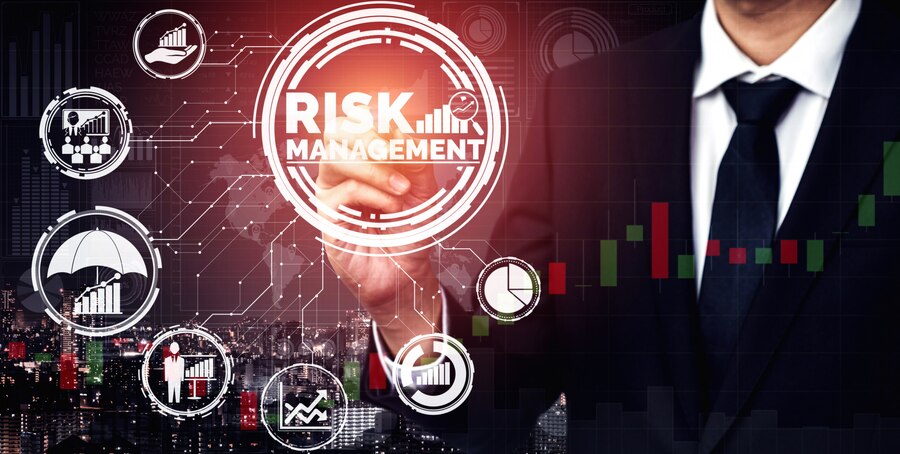
Dear Esteemed Readers,
Welcome to the latest edition of "Future Mortals," your go-to destination for all things related to cutting-edge marketing & branding strategies and trends. In an era where the Business landscape is constantly evolving, we are thrilled to embark on this journey of knowledge-sharing and innovation with you.
Enterprise risk management (ERM) is a comprehensive and structured approach to risk identification, risk assessment, risk response, and risk monitoring. Enterprise risk management (ERM) is the process of identifying and methodically addressing the potential events that represent risks to the achievement of strategic objectives, or to opportunities to gain competitive advantage.
Risk management is an essential element of the strategic management of any organisation and should be embedded in the ongoing activities of the business.
Enterprise risk management (ERM) is a methodology that looks at risk management strategically from the perspective of the entire firm or organization. It is a strategy that aims to identify, assess, and prepare for potential losses, dangers, hazards, and other potentials for harm that may interfere with an organization's operations and objectives and/or lead to losses.
Enterprise risk management takes a holistic approach and calls for management-level decision-making that may not necessarily make sense for an individual business unit or segment.
Let's discuss the benefits of ERM for both Organisation and Employees:
1. Improved decision-making
ERM supports better structure, reporting, and analysis of risks. Standardized reports that track enterprise risks can improve the focus of directors and executives by providing data that enables better risk mitigation decisions. The variety of data (status of key risk indicators, mitigation strategies, new and emerging risks, etc.) helps leadership understand the most important risk areas. By identifying and assessing risks, leaders at all levels can make informed decisions about how to allocate resources, manage risk exposure, prioritize initiatives, and capitalize on opportunities within the context of their business objectives and strategies.
2. Enhanced risk awareness
Organizations that have implemented ERM note that increasing the focus on risk at the senior levels results in more discussion of risk at all levels. The resulting cultural shift allows risk to be considered more openly and breaks down silos with respect to how risk is managed. As risk discussions develop into a standard part of the overall strategic business processes, operational units often find that addressing risk in a more formal way helps manage their part of the organization as well. Increased awareness can enable organizations to take a proactive approach to managing risks and reduce the impact and disruption of risks on their operations.
3. More efficient use of resources
In organizations without ERM, many individuals may be involved with managing and reporting risk across operational units. While developing an ERM program does not replace the need for day-to-day risk management, it can improve the framework and tools used to perform the critical risk management functions in a consistent manner. ERM can help organizations identify areas where resources are being underutilized or overutilized. Eliminating redundant processes improves efficiency by allocating the right amount of resources to mitigating the risk.
4. Increased stakeholder confidence
ERM involves a comprehensive and transparent process for identifying, assessing, and managing risks. This can help to build trust with stakeholders by providing them with a clear understanding of how the organization is managing risks and what steps are being taken to mitigate them. Implementing a robust ERM framework demonstrates a commitment to stakeholders that the organization is focused on achieving its mission and that risk management is an integral part of that process.
5. Improved business continuity
ERM helps organizations anticipate potential risks and be better equipped to operate in the event of a disruption. Identifying and addressing risks before they occur can reduce the likelihood of costly incidents and the resources required to respond to them.
Through the benefits noted above, ERM can enable better cost management and risk visibility in your operations. It also enables better management of market, competitive, and economic conditions, and increases leverage and consolidation of disparate risk management functions.
Planning to implement an ERM framework in your organisation? We can help your organization implement a robust ERM framework, allowing you to manage risks effectively and better achieve your strategic objectives.
We are excited to embark on this journey with you, exploring the vast realm of online marketing, branding, technology and other informative topics and sharing our insights to empower you in your business endeavours. The digital world is ever-evolving, and together, we'll navigate the trends, challenges, and opportunities that lie ahead.
Thank you for joining us on this enlightening ride. Stay tuned for the captivating insights and knowledge that we are all set to bring in each edition.
© All Rights Reserved | Future Mortals